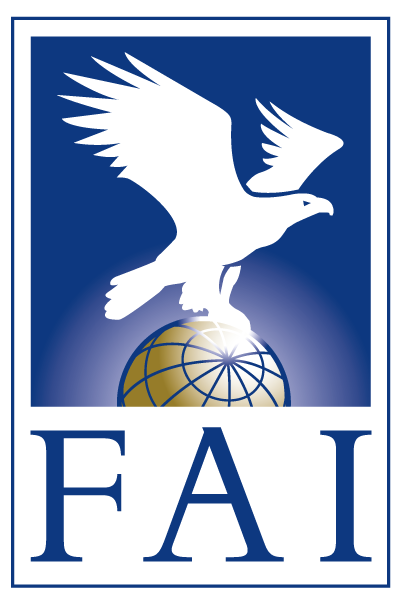18th Coupe Aéronautique Gordon Bennett
St. Louis, United States, September 28, 1929
Results
| Rank | Pilots | Country | Score | Duration | Landing |
|---|---|---|---|---|---|
| 1 | Ward T. van Orman Alan L. McCracken |  USA USA | 548.94 km | 24:00:00 | Troy, Ohio (USA) |
| 2 | William E. Kepner J.F. Powell |  USA USA | 544.00 km | 00:00:00 | Neptun, Ohio (USA) |
| 3 | Lt. T.G.W. Settle Lt. E.Winfield Bushnell |  USA USA | 489.00 km | 00:00:00 | Eaton, Ohio (USA) |
| 4 | Ernest Demuyter F. Lecharlier |  BEL BEL | 364.00 km | 28:00:00 | Corydon, Indiana (USA) |
| 5 | Georg Schenstorm S.A.U. Rasmussen |  DEN DEN | 336.00 km | 00:00:00 | Bedford, Indiana (USA) |
| 6 | Georges M. Blanchet A. Scholle |  FRA FRA | 322.00 km | 00:00:00 | Stinesville, Indiana (USA) |
| 7 | Hugo Kaulen jr. Fr. Ebener |  GER GER | 275.00 km | 17:00:00 | Melvin (USA) |
| 8 | Erich Leimkugel Georg Fröbel |  GER GER | 272.00 km | 17:00:00 | Cathin, Illinois (USA) |
| 9 | Eduardo Bradley Fr. Cadavel |  ARG ARG | 250.00 km | 00:00:00 | Fairbanks (USA) |
Book Article
From the Book: Die Gordon Bennett Ballon Rennen
(The Gordon Bennett Races) by Ulrich Hohmann Sr
Start in St.Louis, Manion Park, September 28th
One had returned to the place of launch of 1907 and 1910, mostly to commemorate John Wise, who had met death exactly 50 years ago, on September 29th, 1897, on a balloon flight across Lake Michigan. John Wise was the most outstanding pioneer of early aeronautics in the United States. He became famous, when he set a world record flying 803 miles in 20 hours and 40 minutes from St. Louis to Henderson (NY) on July 1st, 1859. It was a pity, that only nine balloons took part in a race to honour him. One reason for this were the high expenses, European teams had to pay for the long journey and their stay in the US, the other reason was the more and more pressing superiority of the American balloons. The GOODYEAR company had ordered their best engineers and research scientists to develop new and lighter fabrics and all three balloons of the US teams took their profit of this development. Also, the team van Orman/McCracken was equipped with the most modern navigation aids of their time and so were considered as favourites before the launch. Under these circumstances, it is astonishing, that Germany took part in the race with two balloons, other European nations had sent, if they did, just one. With Great Britain, Italy and Spain, three nations, taking part in almost every race since the beginning, were no longer present. Italy and Spain took part in one race each some years later, Great Britain did not return to the races till 1983, their interest had almost come to an end.
Public interest was also reduced. Other events seized the headlines of the newspapers. LZ 127 GRAF ZEPPELIN had opened civil aviation between Germany and America when this airship flew from Friedrichshafen in Germany to Lakehurst in 111.5 hours under captain Hugo Eckener on October 11th, 1928. And it was just one month ago (August 28th, 1929) when the same ship had successfully finished a round the world-flight in 21 days. One day after the launch of the Gordon Bennett Race Fritz von Opel made the first successful flight with a plane, powered by rockets. That was more interesting than a gas balloons! The spectacular flights with a balloon to the stratosphere happened several years later.
One pilot in this race was the Argentinean Eduardo Bradley. He took part in the race for the second and unfortunately last time. His grand parents had lived in Boston/USA but then emigrated to Buenos Aires. Eduardo Bradley was the best known balloon pilot of South America. In 1909 he had been the first man to cross the Andes by air in a balloon, now he was the Secretary of the civil aviation authority of Argentina.
He began his trip to the race as passenger of the first airmail flight from Buenos Aires to Miami, which lasted 56 hours. The following railroad travel from Miami to St. Louis took him 54 hours. The race was unfortunately for him. Very bad weather forced him to land after about 18 hours south of Terre Haute (Indiana). A tree was in his way, both pilots were thrown overboard. His co-pilot, lieutenant Francisco J. Cadavan caught some bruses, but Bradley got a complicated break of his knee and had to stay in the Union Hospital of Terre Haute for one month.
After take-off at 4 p.m. the balloons crossed the home town of Lindbergh at low speed, heading north east. It rained without interruption and forced the competitors to dump a lot of ballast. The next day brought thunderstorms, that had to be over flown in high altitudes. Experienced Gordon Bennett pilots agreed after the flight, that this race was the most difficult since then.
Ward T. van Orman won the second time (after 1926), short but clear ahead of his fellow citizen W. E. Kepner, who had won the previous year. The fact, that the third rank was also covered by an American is unique in the history of the races an demonstrates the superiority of the American balloons. Demuyter had to be satisfied with rank 4, the two German balloons had a disappointing rank 7 and 8.

